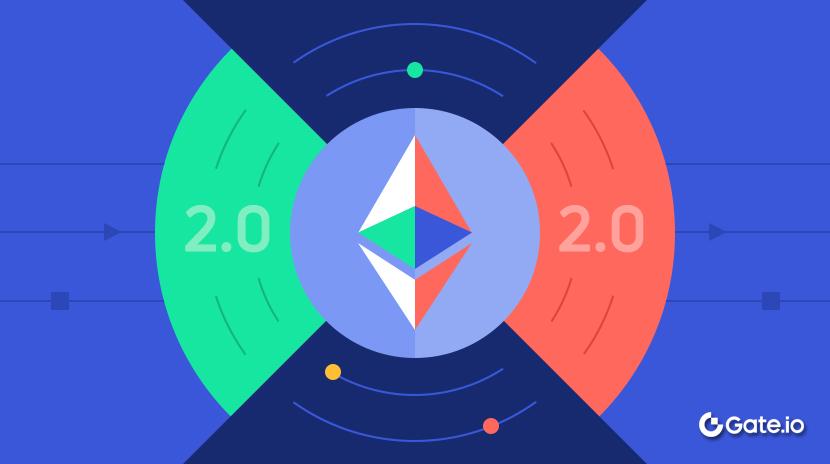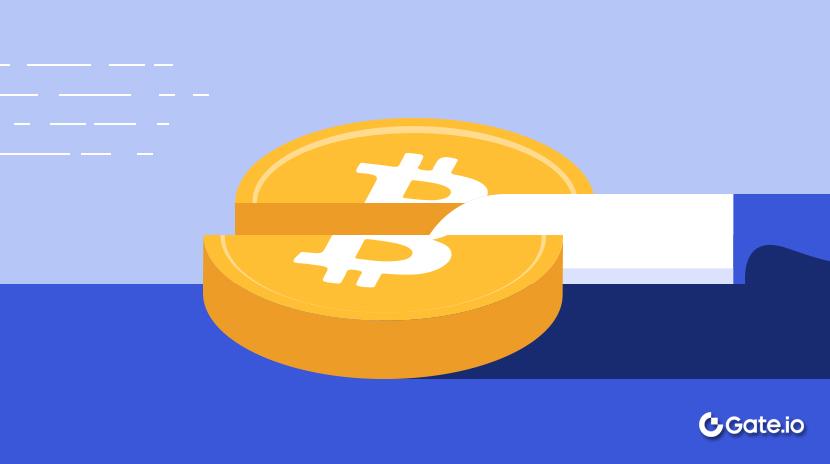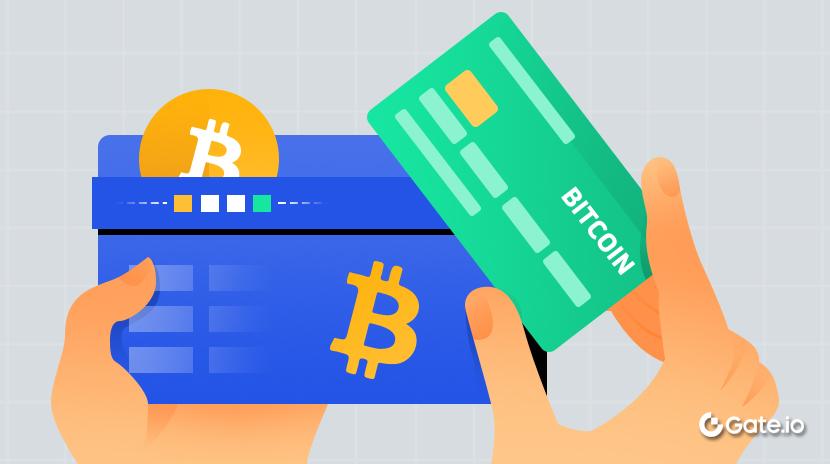从本质上讲,区块链是资产账本。这意味着它擅长三件事:
- 发行资产
- 转移资产
- 编程资产
客观而言,任何利用这些特性的加密应用场景,都因其链上的属性而自然获得结构性优势。同样,任何未利用这些特性的应用场景,都无法获得这种结构性优势。大多数情况下,区块链的价值更多体现在意识形态层面。
去中心化、隐私保护和抗审查确实是值得追求的目标,但这些特性在很大程度上将可编程资产账本的潜在市场(TAM)限制在一小部分理想主义者之中。越来越明显的是,推动大规模采用的路径将由实用主义而非理想主义铺就。因此,本文将重点关注那些如果没有区块链,其产品体验会明显变差的应用场景:
- 代币化
- 去中心化虚拟基础设施网络(DeVin)
- 去中心化物理基础设施网络(DePin)
- 稳定币与支付
- 投机
在深入探讨之前,我想强调两点。
首先,以下论点均基于第一性原理。这意味着我们并不是在刻意将加密技术强行作为某个问题的解决方案,而是在识别那些无论是否有加密技术都会存在的问题,并主动评估区块链是否能提供结构性更优的解决方案。
其次,本文力求尽可能细致入微。人类天生倾向于简化问题,我们的大脑喜欢听起来简单直接的观点。然而,现实并不简单,而是充满细节和复杂性。
论点 #1:代币化
金融资产通常可以分为两类:
- 已证券化的资产
- 未证券化的资产
虽然这看起来是一个微不足道的区分,但它对于理解现有金融账本的运作方式至关重要。已证券化的资产相比非证券资产,具有两个关键特性。
首先,它们拥有 CUSIP 代码。CUSIP 是一个用于标识金融工具(如股票、债券等)的 9 位字母数字代码。例如,苹果公司普通股的 CUSIP 代码是 037833100。在北美地区,金融市场使用 CUSIP,而全球范围内则使用 ISIN(国际证券识别码),ISIN 包含 CUSIP 并扩展为 12 位代码。重要的是,这些代码通过标准化来建立信任,只要资产拥有 CUSIP,所有市场参与者就能保持一致的理解和操作。
其次,几乎所有证券化资产都会通过一个权威的清算机构完成结算。在美国(以及一定程度上在全球范围内),这一角色由存管信托与清算公司(DTCC)承担。DTCC 及其子公司主要负责确保所有交易的清算和结算顺利进行。
以你在 Robinhood 购买 10 股特斯拉股票为例。交易首先被发送到交易所或做市商,与卖方匹配。随后,DTCC 旗下的国家证券清算公司(NSCC)介入,负责清算交易,确保买卖双方履行交易义务。最终,DTCC 旗下的存管信托公司(DTC)在 T+1 结算日完成结算——你的 $2500 美元转给卖方,同时 10 股特斯拉股票被存入 Robinhood 在 DTC 的账户。次日,你的 Robinhood 应用程序会显示你已持有该股票。
当人们讨论区块链如何取代传统金融基础设施,实现更快、更低成本的结算时,他们实际上是在隐含或明确地提及区块链取代 DTCC 及其封闭的中心化资产账本。然而,尽管区块链因其开放性和可编程性,在诸多方面具有结构性优势(如消除批量处理和 T+1 结算、提高资本效率、嵌入式合规等),但区块链要取代 DTCC 仍然面临两个主要挑战:
- 路径依赖:现有证券标准(CUSIP / ISINs)与 DTCC 作为权威结算层的双边网络效应相结合,使得取代现有模式几乎不可能实现。DTCC 的切换成本极高。
- 结构性激励:DTCC 作为一个受高度监管的清算机构,由其用户所有——即包括银行、经纪商和其他证券行业参与者(如摩根大通、高盛等)在内的金融机构财团。换句话说,那些需要集体同意采用新结算系统的机构,同时也对现有系统有着既得利益。
- T+1 结算的复杂性:与支付类似(我们稍后会讨论),T+1 结算的存在并不仅仅是因为传统基础设施过时,区块链未必能够完全解决这些问题。首先,券商并不总是有充足的流动性来即时完成订单。一天的缓冲期允许它们通过贷款或银行转账来筹集资金。其次,DTCC 的净额结算机制减少了实际需要执行的交易数量(例如,1000 笔特斯拉股票买单和 800 笔卖单最终只需结算 200 笔)。直观来看,这种机制在较长时间范围内更有效。如果改为即时结算,将大幅增加实际执行的交易量,而目前几乎所有区块链都难以承受这一负荷。作为参考,DTCC 在 2023 年的年交易量达到了 2.5 千万亿美元。
简而言之,现有的金融基础设施更可能由 DTCC 自身升级,而不是被区块链取代。因此,任何在链上交易的证券本质上仍然是二级发行的,意味着它们在后台仍需与 DTCC 进行结算。这不仅削弱了区块链在理论上的结构性优势,而且代币化还增加了预言机用于对接价格数据的成本和复杂性。
因此,链上证券的价值主张被大幅削弱,主要变成了为非 KYC 实体提供监管套利的机会,使其能够在 DeFi 生态中访问和使用证券。虽然这种需求确实存在,尤其是在新兴市场,但相较于主要市场的初级发行资产而言,这只是一个较小的细分市场。
然而,这并不意味着区块链在代币化证券领域毫无作用。尽管现有的本地清算机构运作“足够良好”,且不会因结构性因素受到颠覆,但不同国家清算机构之间的全球互操作性仍然较差(通常结算周期为 T+3)。或许,区块链更具吸引力的机会在于充当全球对账层,连接各国的清算机构。鉴于区块链作为开放式资产账本的无国界特性,它可以将国际交易的结算时间从 T+3 降至接近零。更有趣的是,这可能成为逐步渗透本地结算市场的突破口,而不会面临冷启动难题。正如我们将在后文讨论的,这一逻辑同样适用于支付领域。
释放长尾流动性
这将我们引向第二类金融资产——非证券化资产。从定义上讲,这些资产没有 CUSIP 代码,也不依赖于 DTCC 及现有的金融基础设施。大多数此类资产通常通过双边交易进行交易(或根本不交易)。非证券化资产的示例包括私募信贷、房地产、贸易融资应收账款、知识产权、收藏品以及私募基金(如 PE、VC 和对冲基金)的份额。目前,这些资产未被证券化的主要原因有两个:
- 异质性:证券化需要同质化资产,以便能够轻松组合和标准化。而上述资产大多是异质的——每一处房地产、私募贷款、应收账款、基金份额或艺术品都具有独特的特征,使其难以整合和标准化。
- 缺乏活跃的二级市场:这些资产缺乏类似于纽交所(NYSE)用于股票交易的标准化二级市场。因此,即使它们被证券化并通过 DTCC 结算,也缺乏连接买卖双方的交易所。
- 高准入门槛:证券化一个资产的流程通常需要超过六个月,并且发行方需支付超过 200 万美元的费用。虽然部分流程对于确保合规性和信任度是必要的,但整体过程过于冗长且成本高昂。
回到本文的核心观点,作为可编程资产分类账,区块链擅长以下三件事——每一项都能解决前述痛点:
- 发行资产:虽然资产证券化的门槛较高,但在链上对这些资产进行代币化的阻力较小。此外,这并不一定会影响合规性,因为合规逻辑可以直接嵌入资产本身。
- 转移资产:通过提供共享的资产分类账,区块链为前端构建统一的流动性市场提供了后端基础设施。其他市场(如借贷、衍生品等)也可以在此基础上建立,以提高整体效率。
- 编程资产:DTCC 仍运行在包括 COBOL 在内的数十年历史的系统上,而区块链能够直接将逻辑嵌入资产之中。这意味着异质性资产可以通过嵌入更复杂的逻辑被简化或打包成代币化载体。
简而言之,虽然区块链可能仅对 DTCC 现有证券结算带来一定程度的改进,但对于非证券资产而言,它提供了跃迁式的价值提升。这表明,可编程资产分类账的合理采用路径可能会从长尾市场开始。这不仅符合直觉,也与大多数新兴技术的采用模式一致。
MBS时刻
我的一个相对非共识的观点是,抵押贷款支持证券(MBS)是过去 50 年最重要的技术之一。通过将抵押贷款转化为可在流动性二级市场交易的标准化证券,MBS 通过更具竞争力的投资者池改善了价格发现,削弱了抵押贷款中长期存在的流动性溢价。换句话说,我们能够以更低的成本融资购房,很大程度上要归功于 MBS。
在未来五年内,我预计几乎所有非流动性资产类别都将经历其“MBS 时刻”。代币化将带来更具流动性的二级市场、更激烈的竞争、更好的价格发现,最重要的是,更高效的资本配置。
论点 #2:去中心化虚拟基础设施网络(DeVin)
人类历史上,人工智能首次将在几乎所有领域超越人类智能。更重要的是,这种智能不会停滞不前——它将不断改进、专注化并进行协作,同时具备近乎无限的可复制性。换句话说,想象一下,如果我们能够无限复制各个领域最顶尖的人才(仅受算力限制),然后对其进行超优化,使其能够无缝协作。
简而言之,人工智能的影响将是巨大的,而且很可能远超我们以线性思维所能直觉预见的程度。
那么,作为可编程资产账本,区块链在这一新兴的智能代理经济中会扮演什么角色?
我认为区块链增强 AI 的方式主要有两种:
- 资源协调
- 作为智能代理交易的经济基础层
在本文中,我们主要探讨第一个用例。如果你对第二个用例感兴趣,我在几个月前写了一篇专门的文章(简要概述:区块链可能会成为智能代理经济的底层支撑,但这需要时间)。

未来的商品
从根本上讲,AI(尤其是智能代理)需要五种核心资源来运行:
- 能源:电力支撑 AI 硬件的运行。没有能源,就没有算力,也就没有 AI。
- 算力:算力驱动 AI 进行推理和学习的能力。没有算力,AI 无法处理输入或执行任务。
- 带宽:带宽确保 AI 之间的数据传输,使其能够实时协作和更新。
- 存储:存储决定 AI 的数据和软件保留能力。没有存储,AI 无法保持知识或状态。
- 数据:数据为 AI 提供学习和响应所需的上下文。
在本论点中,我们主要关注前四项。要理解区块链在 AI 领域最具吸引力的用例之一,首先需要了解算力、能源、带宽和存储的现有采购与定价方式。
与传统大宗商品市场根据供需动态定价不同,这些市场通常依赖僵化的双边协议。例如,算力主要通过与 AWS 等云计算巨头签订长期合同或直接购买 Nvidia GPU 来获取。能源采购同样低效,数据中心通常与公用事业公司或能源批发商签订固定费率的购电协议(PPA),且协议往往提前多年达成。存储和带宽市场也存在类似的结构性低效问题。存储通常从云服务提供商处按预定容量采购,企业往往会超额购买以防止容量不足。带宽则通过与 ISP 和 CDN 提供商签订刚性的承诺协议获取,迫使企业必须优先考虑峰值需求,而非平均使用量。
这些市场的共同特征是缺乏精细化、实时的价格发现机制。当前系统采用刚性层级定价,而非连续价格曲线,这种方式虽然提供了可预测性,但也导致了资源错配,使买卖双方无法高效协调。结果要么是(1)资源浪费,要么是(2)企业受限,最终造成资源分配低效。
可编程资产账本为上述问题提供了有力的解决方案。尽管这些资源不太可能被证券化(如前文所述),但它们却可以被轻松地代币化。通过将算力、能源、存储和带宽代币化,区块链理论上能够为这些资源解锁流动市场,并实现实时动态定价。
值得注意的是,现有账本无法实现这一点。作为可编程资产账本,区块链在这一背景下具备五项结构性优势:
- 实时结算:如果资产账本需要数小时甚至数天才能完成这些资源的结算,那么它将削弱市场的效率。区块链本质上是开放的、无国界的、全天候运行的,并支持实时交易,从而确保市场不受结算延迟的影响。
- 开放性:与由寡头垄断的传统资源市场不同,基于区块链的资源市场在供给端的准入门槛极低。开放的市场允许任何基础设施提供商——从超大规模数据中心到小型运营商——都能将其剩余容量代币化并提供给市场。与大多数人的认知相反,数据中心市场的长尾部分实际上占据了更大的份额。
- 可组合性:区块链允许其他衍生市场在这些基础市场之上构建,从而提高市场效率,使买卖双方能够像传统大宗商品市场一样进行对冲。
- 可编程性:智能合约使复杂的条件逻辑可以直接嵌入资源分配。例如,算力代币可以根据网络拥堵情况自动调整执行优先级,而存储代币可以通过智能合约自动在不同地理区域复制数据,以优化延迟和冗余。
- 透明性:链上市场提供对定价趋势和资源使用情况的可见性,使市场参与者能够做出更明智的决策,并减少信息不对称问题。
重要的是,虽然这一想法在几年前可能面临阻力,但随着越来越多自主 AI 代理的出现,对代币化资源市场的需求将大幅加速。随着代理的普及,它们将本质上需要动态访问这些资源。
例如,设想一个自主视频处理代理被赋予分析成千上万地点的安保监控录像的任务。它的日常算力需求可能会有数量级的波动——在正常情况下需要的资源极少,但在检测到异常事件时,则需要大规模扩展,调动数千 GPU 小时来进行深度分析。在传统云计算模式下,该代理要么通过超额配置浪费大量资源,要么在高峰需求时面临严重的性能瓶颈。
然而,在代币化算力市场中,该代理可以按需、按市场价格精确获取所需的资源。当检测到异常事件时,它可以立即竞标并获取额外的算力代币,以最快速度处理监控视频,然后在分析完成后立即将这些资源释放回市场——整个过程无需人工干预。这种经济效率的提升,如果扩展到数百万个自主代理,将带来资源配置的跨越式进步,这是传统采购模式无法比拟的。
或许更有趣的是,这种模式可能催生此前无法实现的新用例。如今的 AI 代理仍然依赖于已有的公司架构,以获取计算、能源、存储和带宽资源。然而,借助区块链驱动的市场,代理可以自主按需获取这些关键资源。这从根本上颠覆了现有模式,使代理成为真正独立的经济参与者。这种转变将促进更高程度的专业化和实验创新,让 AI 代理能够在不受机构约束的情况下优化针对特定应用场景的能力。
最终,这将带来一个全新的范式,下一代突破性的 AI 应用不会由上而下构建,而是从自主代理之间的交互中自发涌现。而这一切,正是由可编程资产账本独特地实现的。
展望未来
这一转变最初可能会缓慢且渐进,但随着 AI 代理变得更加自主,并在经济中发挥更重要的作用,链上资源市场的结构性优势将愈发显现。
正如过去的大宗商品——石油、农业、金属和土地——逐步形成高效市场一样,未来的大宗商品——算力、能源、带宽和存储——也将不可避免地找到属于它们的市场。不过,这一次,它们将在链上构建。
论点 #3:去中心化物理基础设施网络(DePin)
如果说前一个论点论证了可编程资产账本如何作为新兴资源市场的数字基础层,那么本论点将探讨区块链如何同时颠覆物理基础层。虽然我们不会深入探讨每个 DePin 领域(@PonderingDurian 和我在此进行了深入分析),但以下逻辑通常适用于任何 DePin 赛道(如电信、GPU、定位、能源、存储和数据)。
波特五力分析
理解物理基础设施公司的经济模式以及区块链和 DePin 可能如何颠覆它们的最佳框架之一,就是从迈克尔·波特(Michael Porter)的五大竞争力角度进行分析。

波特的框架提供了一个更细化的视角,分析在缺乏结构性护城河的情况下,多种因素如何将任何企业的利润率压缩至资本成本水平。五大竞争力如下:
- 现有竞争者之间的竞争:行业是否存在激烈竞争,导致价格战并压低利润率?基础设施巨头往往在寡头垄断的市场中运营,采取默契或明确的方式保持较高的价格,以维持丰厚的利润。
- 新进入者的威胁:新竞争者进入市场的难易程度如何?如果供应增加,是否会稀释利润?直觉上,基础设施巨头通常受资本密集型业务和规模经济的保护,使得市场准入壁垒较高。
- 替代品的威胁:是否存在可以削弱现有产品价值的替代品?由于基础设施业务本质上属于商品化行业,因此通常不受替代品的威胁。
- 买方议价能力:企业能否保持产品的高定价,直接影响盈利能力。客户或企业是否拥有议价能力,能够要求更低的价格或更优的条件,从而压缩供应商的利润?基础设施巨头面临较低的用户转换成本,这通常意味着成本最低的供应商在商品市场中占据优势。
- 供应商议价能力:企业的盈利能力同样受到投入成本的影响。企业是否能够对关键供应商施加影响,以保持适度的成本?基础设施巨头的主要投入包括:(1)土地,(2)劳动力,(3)硬件。虽然供应商确实具有一定的议价能力,但大型基础设施企业通常通过长期合同和批量采购来缓解这些风险。
显然,该框架表明物理基础设施巨头拥有极强的市场防御能力。这也与现实情况相符,大多数行业巨头已经保持市场地位超过 30 年。然而,DePin 模式仍然是一个强劲的挑战者,主要有三个原因。
DePin 的结构性优势
首先,DePin 采用了一种全新的资本形成模式,即将网络建设的前期资本成本外包给个体贡献者。这些贡献者以此获得代表网络未来增长权益的代币。这种模式使得 DePin 项目能够在无需集中筹集资金的情况下,达到规模经济所需的临界规模,从而具备与传统基础设施巨头竞争的单体经济效益。换句话说,如果执行得当,DePin 模式可以突破规模经济对现有企业的保护壁垒,为新进入者提供可行的市场机会。
其次,DePin 在波特的第五种竞争力——供应商的议价能力——上实现了根本性优化。DePin 通过分布式网络调动个人资源,不仅降低了基础设施企业的主要投入成本,甚至可能完全绕开其中两项(甚至三项)核心成本:
- 土地:DePin 依靠个体贡献者,他们本身就拥有土地,因此无需支付额外的土地成本。
- 劳动力:同样,DePin 通过将节点的设置和维护工作外包给网络参与者,规避了传统的人工成本。
DePin 模式的第三大结构性优势在于其更精细的供需匹配能力,从而减少市场中的无谓损失(deadweight loss)。这一优势在地理位置敏感型网络(例如 DeWi)中尤为明显。这类项目能够先识别带宽需求最旺盛的地区,并通过精准分配代币激励来推动供应方建设相应的基础设施。此外,若其他地区的需求激增,DePin 网络还可以动态调整激励措施,以确保资源的最优配置。
这一点与传统基础设施企业形成鲜明对比。传统企业往往采取先建设供应,再等待需求跟上的模式。如果需求下降,电信公司仍然需要承担维护基础设施的成本,造成资源浪费。而 DePin 网络因其去中心化特性,能够更精准地匹配供需,避免无谓损失。
展望未来
从需求端来看,我预计 DePin 模式将在两个关键领域持续展现优势:(1) 面向 B2B 应用,例如计算、数据、定位和存储等领域,企业用户通常对成本高度敏感;(2) 面向消费者的商品服务,如带宽和能源等,这些领域的消费者同样更关注价格优化,而非主观偏好。
论点 #4:稳定币与全球支付
2023 年,全球 GDP 约为 100 万亿美元。同年,全球交易费用支出超过 2 万亿美元。换句话说,每 100 美元的全球支出中,平均有 2 美元用于支付交易费用。随着世界越来越突破地理限制,这一数字预计将以 7% 的年均复合增长率持续增长。显然,满足更低成本的全球支付需求是一个巨大的机会。
与国内支付类似,跨境支付的高额交易费用主要源于风险,而非网络基础设施。与常见认知不同,全球支付的消息层——SWIFT 实际上相当便宜(h/t @sytaylor)。SWIFT 的网络费用通常仅为每笔 0.05 - 0.20 美元,而剩余的成本——通常高达 40 - 120 美元——主要来自两个方面:
- 风险与合规:银行必须确保跨境交易符合 KYC/AML 规定、制裁要求及其他货币限制。若银行违反这些规则,可能面临高达 90 亿美元的罚款。因此,银行需要投入专门团队和基础设施来避免违反制裁。
- 代理银行体系:银行间的全球资金流动依赖代理银行关系。由于不同银行依据其所在司法辖区管理风险和合规,这种差异导致了额外的成本。银行需要组建专门团队并建设基础设施来管理代理银行合作关系。
最终,这些成本都会转嫁给终端用户。因此,单纯地呼吁“降低全球支付成本”并不能解决问题,真正需要的是一种结构上更优的方式来审计和管理全球支付的风险。
从直觉上看,这正是区块链的优势所在。区块链不仅消除了对代理银行的需求,还提供了一个开放账本,所有交易都可实时审计,使其成为在风险管理方面更优的资产账本。
此外,也许更有趣的是,由于具有可编程性,区块链可以将任何必要的规则或支付相关的合规性嵌入到交易本身中。区块链的可编程性还使得抵押资产的原生收益能够分配回跨境支付服务商(甚至可能是最终用户)。这与西联汇款等传统汇款机构形成鲜明对比,西联汇款的资金被锁定在全球预先注资的账户中。
更有意思的是,区块链的可编程性允许支付规则和合规要求直接嵌入交易中。此外,区块链还能让抵押资产的原生收益回馈给跨境支付的参与方,甚至可能惠及终端用户。这与西联汇款(Western Union)等传统支付机构形成鲜明对比,后者的资金通常被锁定在全球各地的预存账户中。
最终,风险承保成本应该会趋近于编程开源账本以处理合规和风险管理的成本(再加上法币出入金的额外费用),并扣除稳定币抵押资产所产生的收益。这使得区块链支付方案在结构上优于现有的代理银行体系,以及依赖封闭式、中心化数据库的现代跨境支付解决方案(如 Wise)。
最重要的是,与国内支付不同,各国政府并没有动力自行构建全球互通的支付基础设施,因为这可能会削弱稳定币的价值主张。事实上,政府有强烈的结构性动机不去建立可互操作的全球支付网络,以确保本币价值主要保留在本国金融体系内。
采用路径
最后,值得探讨稳定币的采用路径。归根结底,稳定币的采用轨迹将由两个关键因素决定:
- 支付类型(B2B、B2C、C2C 等)
- 支付通道(G7、G20 次级经济体、长尾市场)
从直觉上看,支付费用最高、银行/支付基础设施最差的支付通道将最先采用稳定币,例如全球南方、拉美和东南亚。此外,这些地区往往受不负责任的货币政策影响,国内货币长期处于高波动状态。在这些市场中,稳定币的采用带来了双重好处:更低的交易费用以及美元的可获取性。事实上,获取美元可能是当前这些地区对稳定币需求的最大驱动力,并可能继续推动未来增长。
其次,由于企业通常比消费者更具成本敏感性,B2B 领域也将在采用路径上领先。目前,90% 以上的跨境支付都是 B2B 交易。在这一垂直领域中,中小企业(SMBs)最适合采用稳定币,因为它们的利润率较低,同时比大型企业更愿意承担风险。那些无法获得传统银行服务、又需要美元的中小企业,可能是稳定币采用的最佳切入点。 在全球范围内,稳定币的其他重要应用场景还包括: 资金管理(Treasury Management) 贸易融资(Trade Financing) 国际支付与应收款(International Payouts and Receivables)
展望未来,随着更多长尾市场逐步采用稳定币作为结构上更优的跨境支付方式,其优势将变得愈发明显,从而带动整个市场逐步跟进。
论点 #5:投机
最后一个论点或许是最显而易见的。人类天生就有投机和赌博的欲望,这种特性已经延续了数千年,并且未来仍将持续存在。
此外,越来越明显的是,区块链在填补这一需求方面具有独特优势。作为可编程的资产分类账,区块链再次降低了发行资产的门槛——在这种情况下,指的是具有非线性回报的投机性资产。这涵盖了从永续合约到预测市场,再到 Meme 币等各种形式。
展望未来,随着用户在风险曲线上不断探索,并寻求更具非线性回报的机会,区块链将能够以更加新颖的方式满足这种投机需求。这可能包括运动员、音乐人、歌曲、社交趋势,甚至是 TikTok 帖子等各种市场。
人类对投机的需求不会停止,而区块链是从第一性原理出发,最适合承载这一需求的解决方案。
展望未来
纵观历史,新技术的普及往往遵循类似的轨迹:
某项新兴技术带来结构性优势 → 一小部分企业率先采用以提高利润率 → 现有企业要么跟进以保持竞争力,要么失去市场份额,被更灵活的采用者取代 → 该技术的采用成为行业标配,资本主义自然选择胜者。
在我看来,这正是区块链作为可编程资产分类账的普及不仅可能发生,而且是必然的原因。区块链在代币化、DeVin、DePin、支付和投机这五个方向上提供了明确的结构性优势,因此其普及只是时间问题。尽管确切的时间尚不明确,但可以确定的是,我们从未如此接近这一变革。
声明:
- 本文转载自 [Robbie Petersen]。所有版权归原作者所有[Robbie Petersen]。若对本次转载有异议,请联系 Gate Learn 团队,他们会及时处理。
- 免责声明:本文所表达的观点和意见仅代表作者个人观点,不构成任何投资建议。
- Gate Learn 团队将文章翻译成其他语言。除非另有说明,否则禁止复制、分发或抄袭翻译文章。
相关文章


不可不知的比特币减半及其重要性


如何选择比特币钱包?

CKB:闪电网络促新局,落地场景需发力
